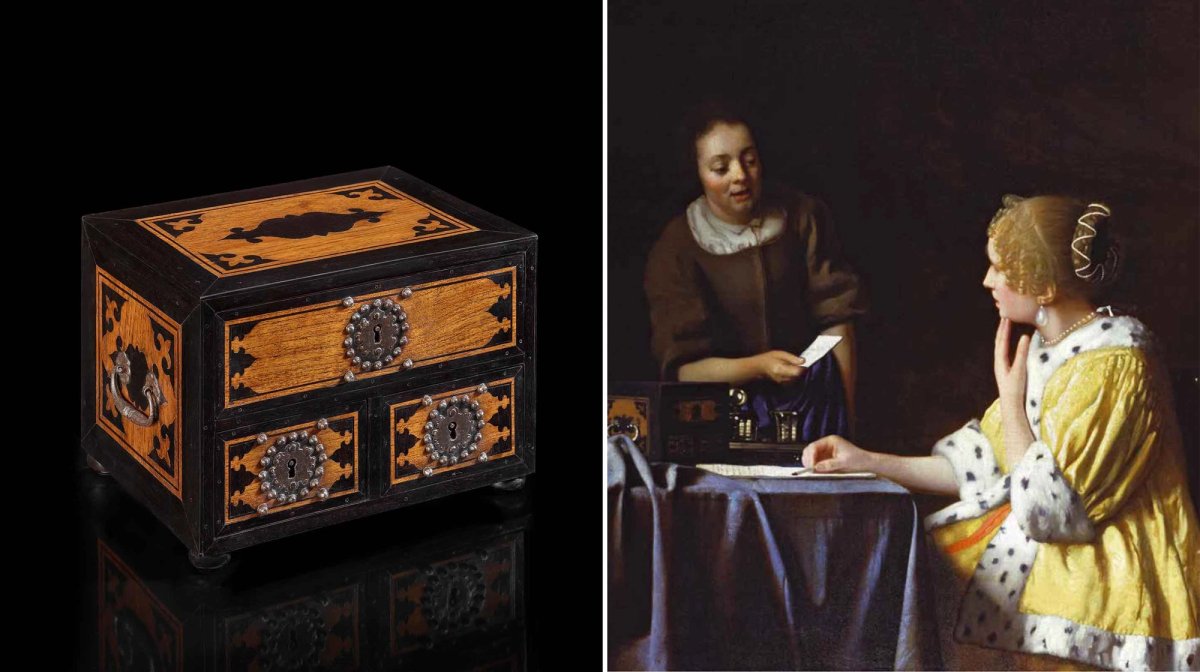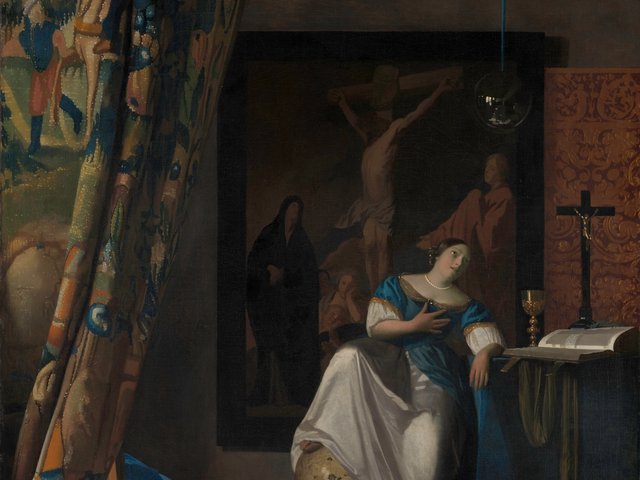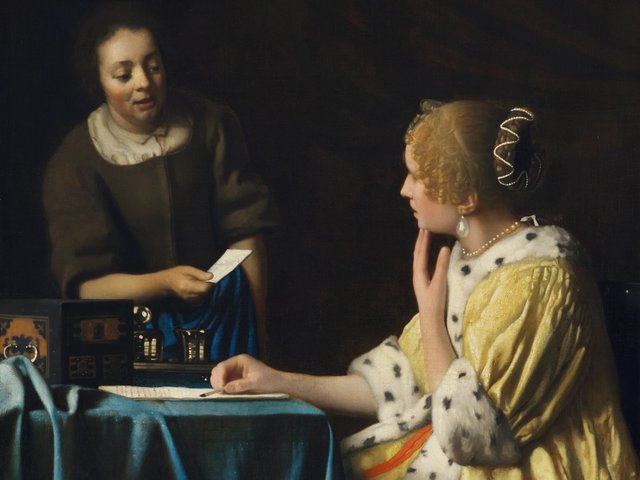New research on a rare Indian jewellery casket painted by Johannes Vermeer has thrown fresh light on the artist’s mysterious pictures—as well as his relationship to his patrons. The details are reported by Alexandra van Dongen, a curator at Rotterdam’s Boijmans Van Beuningen Museum, in a book to be published in the Netherlands on 20 November.
In De tastbare wereld van Johannes Vermeer (The tangible world of Johannes Vermeer), Van Dongen investigated the casket which appears on a table in two paintings: Mistress and Maid (Frick Collection, New York) and A Lady Writing (National Gallery of Art, Washington, DC) (both 1664-67).
The casket is Indo-Portuguese, made in the 17th century in the port of Cochin (now Kochi, in the south of India) by a skilled local craftworker for a European buyer. It integrates both Indian and Portuguese design.
Such caskets, created from teak and ebony, are now extremely rare, and Van Dongen tracked down what may be the sole surviving example with the help of the Amsterdam dealer Dickie Zebregs. It is in the Távora Sequeira Pinto collection in Porto (and will go on display next year in the Museu das Convergências).
These types of caskets would have been very expensive in 17th-century Holland and it is almost inconceivable that Vermeer could have afforded one. Yet he has accurately depicted a casket in the two paintings, which means that he presumably had an example in his studio.
Van Dongen’s book suggests that the most likely source of the casket would have been Vermeer’s greatest patron, Maria de Knuijt. She is believed to have bought at least 20 of the artist’s 37 or so paintings, and together with her husband Pieter van Ruijven supported the artist as his style developed. De Knuijt was not only wealthy, but a major shareholder in the Dutch East India Company, which traded between the Netherlands and India.
It is therefore quite conceivable that she asked Vermeer to include her precious casket in Mistress and Maid and A Lady Writing, both of which are believed to have been in her collection. Whatever the case, the clear connection between the painted and real caskets show how Vermeer wished to depict beautiful objects accurately.

A casket also appears in Vermeer’s A Lady Writing (1664-67)
National Gallery of Art, Washington, DC
Another Asian object in Vermeer’s paintings is a 17th-century Japanese lacquer box with gold-powder decoration which can be seen in Woman with a Pearl Necklace (1662-64, Staatliche Museen zu Berlin). This would have come via Nagasaki, where the Dutch were then the only Europeans permitted to trade with Japan.
The Japanese box in Vermeer’s painting would probably have been used to keep jewellery or grooming accessories. One can again speculate that it might have belonged to De Knuijt, who was also the first owner of Woman with a Pearl Necklace. This picture dates from the same period as the two paintings with the Indo-Portuguese casket.
A more mundane object discussed by Van Dongen is the earthenware cooking pot in The Milkmaid (1658-59, Rijksmuseum, Amsterdam). She identifies the pot receiving the poured milk as having been made in Oosterhout, 60 kilometres south of Delft. These pots stand on three legs, but in the painting those legs are obscured by the bread.

Vermeer, The Milkmaid (1658-59) features an earthenware cooking pot, its three legs obscured
Rijksmuseum, Amsterdam
Vermeer, who alongside his art also ran the family’s “Mechelen” tavern in Delft’s market square, would certainly have had easy access to pottery vessels. The objects that appear in his paintings range from the luxurious to the commonplace—and all are realistically depicted.




